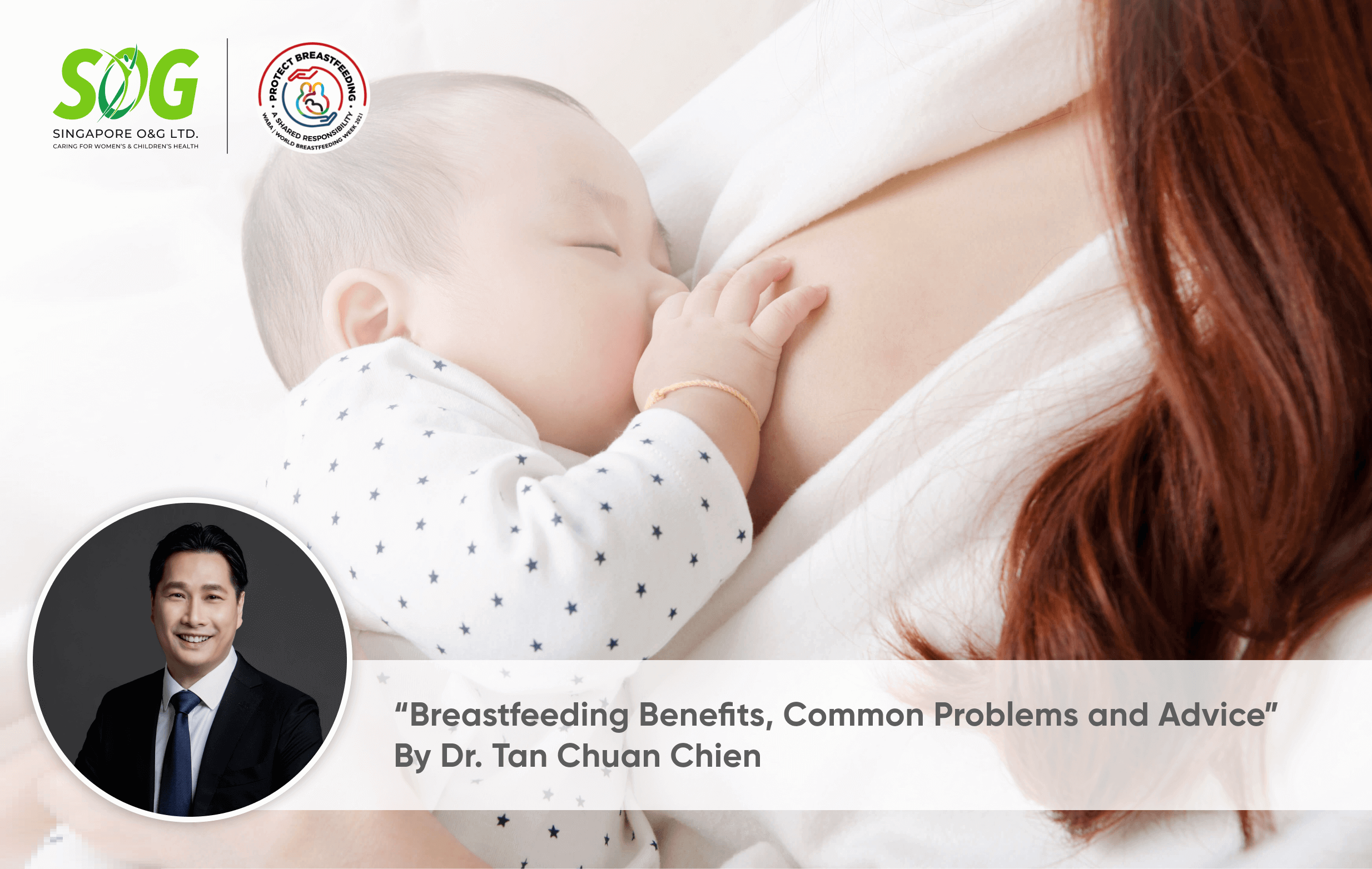Breast Health
6 Frequently Asked Questions About Breastfeeding

Breastfeeding is the process where mothers supply their babies with all the necessary food, energy and nutrients they need for the first few months of life with their breast milk. It is common to feel anxious and uncertain during this period, especially if it is your first pregnancy. Fortunately, breastfeeding is a rite of passage for most mothers, and any queries or problems faced during breastfeeding are completely normal.
Here are 6 frequently asked questions about breastfeeding:
1. Does breastfeeding hurt?
Although there may be some initial discomfort during the first few days of breastfeeding, breastfeeding should not be painful. If there is pain, it is likely due to poor latching and feeding posture. A proper latching and feeding posture will ensure that both the mother and baby remain comfortable during the entire breastfeeding process.
If you feel any pain during breastfeeding, you can visit your obstetrician and gynaecologist (OB/GYN) or breast specialist to resolve the problem.
2. Why do I feel pain during breastfeeding?
Breastfeeding pain and complications are common, particularly during the first few weeks of breastfeeding and for first-time mums who may not know how to breastfeed properly.
Alternatively, breastfeeding pain may also be caused by skipped or irregular feedings, resulting in overproduction of milk and breast engorgement (breast fullness). This can cause the milk ducts to be clogged, leading to pain and inflammation of the breast (mastitis). Restrictive clothing such as tight bras can also put pressure on your breasts, blocking the milk ducts.
3. How often and for how long should I feed my baby?
All mothers and babies are different, and hence every feeding pattern is unique. However, as much as possible, babies should be breastfed on demand (responsive feeding), whenever your baby requests it. Typically, a baby will need to be fed every two to three hours, with each feed lasting between 15 to 45 minutes. It is vital to respond flexibly and quickly to your baby’s hunger cues, as breastfeeding not only fills your baby’s belly, it also provides them with comfort and reassurance.
According to The World Health Organization (WHO), mothers should try to establish and sustain exclusive breastfeeding (feeding with breast milk only) for the first six months.Thereafter, to provide their baby with complementary solid foods with continued breastfeeding up to two years of age and beyond.
4. How is breast milk different from infant formula?
Breast milk has greater nutritional value than infant formula and contains just the right amount of protein, water, carbohydrates and other minerals for human digestion, brain development and growth. On the other hand, formula milk may contain various types of protein which infants may have difficulty digesting due to their underdeveloped digestive system.
Additionally, breast milk contains antibodies and anti-inflammatory agents, which help to fight against bacteria and viruses, and regulate the body’s immune system response against infection. Since a baby’s immune system is not fully mature during the breastfeeding stage, breast milk provides an extra advantage and protection that formula-fed infants may not have.
5. How can I increase my breast milk supply?
Most mothers will have enough breast milk to exclusively breastfeed their baby for as long as their little one wants. However, sometimes there may not be enough breast milk during breastfeeding due to various reasons, with improper latching and feeding postures being one of the main reasons.
Some of the ways to increase or promote breast milk supply include:
- As recommended by the Baby Friendly Hospital Initiative (BFHI), newborn infants should have immediate skin-to-skin contact with their mothers immediately after birth
- Initiating breastfeeding early, preferably immediately after delivery
- Breastfeeding frequently or breastfeeding on demand about every 2 to 3 hours at least 8 times within 24 hours
- Ensuring that your baby is latching well and removing milk efficiently from your breast
- Switching your baby from one breast to the other and emptying them well at each feed or pumping session
- Compressing your breast to aid milk flow during feeding
- Getting adequate rest
- Drinking a lot of water and eating a healthy and balanced diet
- Eating foods such as unripe papayas, fish, oatmeal, barley, asparagus, spinach or garlic
6. How do I adopt a good latching and feeding posture?
A proper latching and feeding posture allows you and your baby to remain comfortable during breastfeeding.
To ensure your feeding and latching position is proper, you can adopt the following tips:
- Make sure your baby is well supported by using pillows to raise your baby to the same level as your breasts
- Rest your baby in a comfortable position facing your breast
- Compress or cup your breast in a C shape following the same orientation as your baby’s mouth
- Use your hand to support and bring your baby’s head to your breast chin-first
- Position your nipple upwards and towards the roof of your baby’s mouth, ensuring that their lips are pursed outwards and their nose is not blocked
- Try alternating feeding postures to find your most comfortable position
- Wear comfortable nursing outfits or special breastfeeding bras that can offer proper support and protection
Conclusion
Breastfeeding is one of the first key milestones in your baby’s growth journey. For first-time mothers, breastfeeding is a very new experience that may be filled with worry and doubt. Even for mothers who have breastfeeding experience, there may still be many questions and uncertainty as every newborn is unique.
If you have any further queries related to breastfeeding or experience any complications during breastfeeding, you should book an appointment with a breast specialist or your obstetrician and gynaecologist (OB/GYN).
WHO WE ARE
About SOG Health Pte. Ltd.
Established in 2011, SOG Health Pte. Ltd. (“SOG”) is a leading healthcare service provider dedicated to delivering holistic health and wellness services to the modern family.
With a long and established track record in Singapore providing Obstetrics and Gynaecology (“O&G”) services such as pre-pregnancy counselling, delivery, pregnancy and post-delivery care, the Group has since further expanded its spectrum of healthcare services to include Paediatrics, Dermatology, and Cancer-related General Surgery (Colorectal, Breast & Thyroid).
The Group’s clinics, under its four operating segments of O&G, Paediatrics, Oncology and Dermatology, are strategically located throughout Singapore to provide easy access to its patients.
- Obstetrics
- Gynaecology
- GynaeOncology
- Breast, Thyroid & General Surgery
- Colorectal, Endoscopy & General Surgery
- Dermatology
- Paediatrics
Consult With A Specialist From SOG
Visit one of our specialists today to learn more about your health!
Recommended Specialists
Book An Appointment
Fill up this form and our clinic will get back to you shortly.
For general enquiries, please click here.








